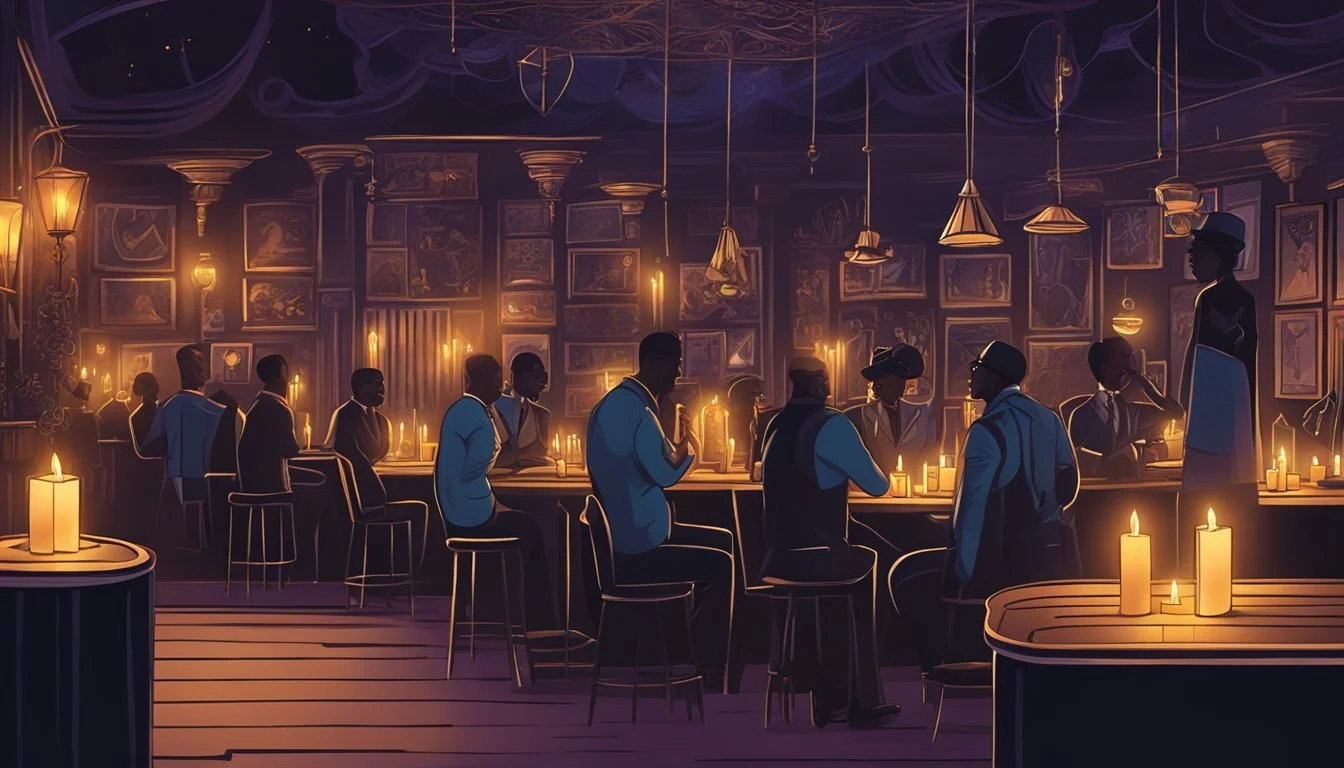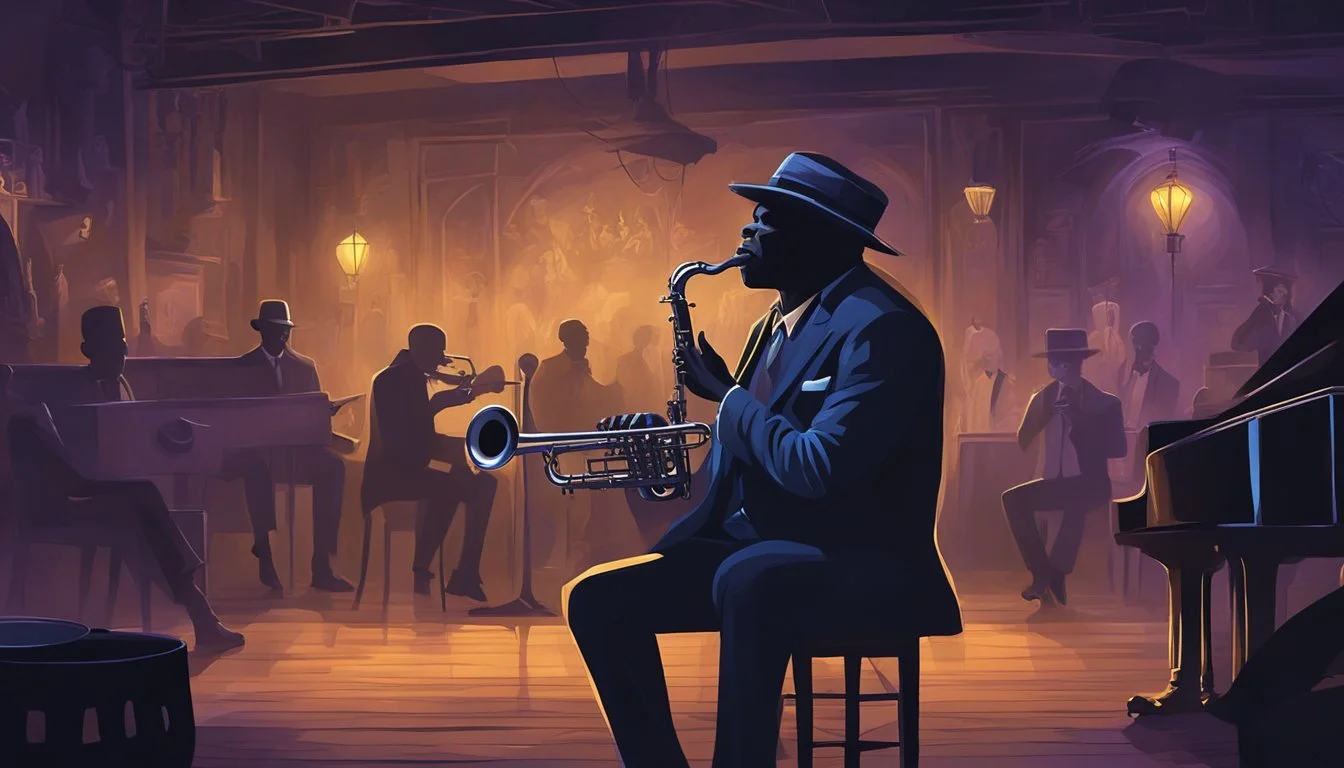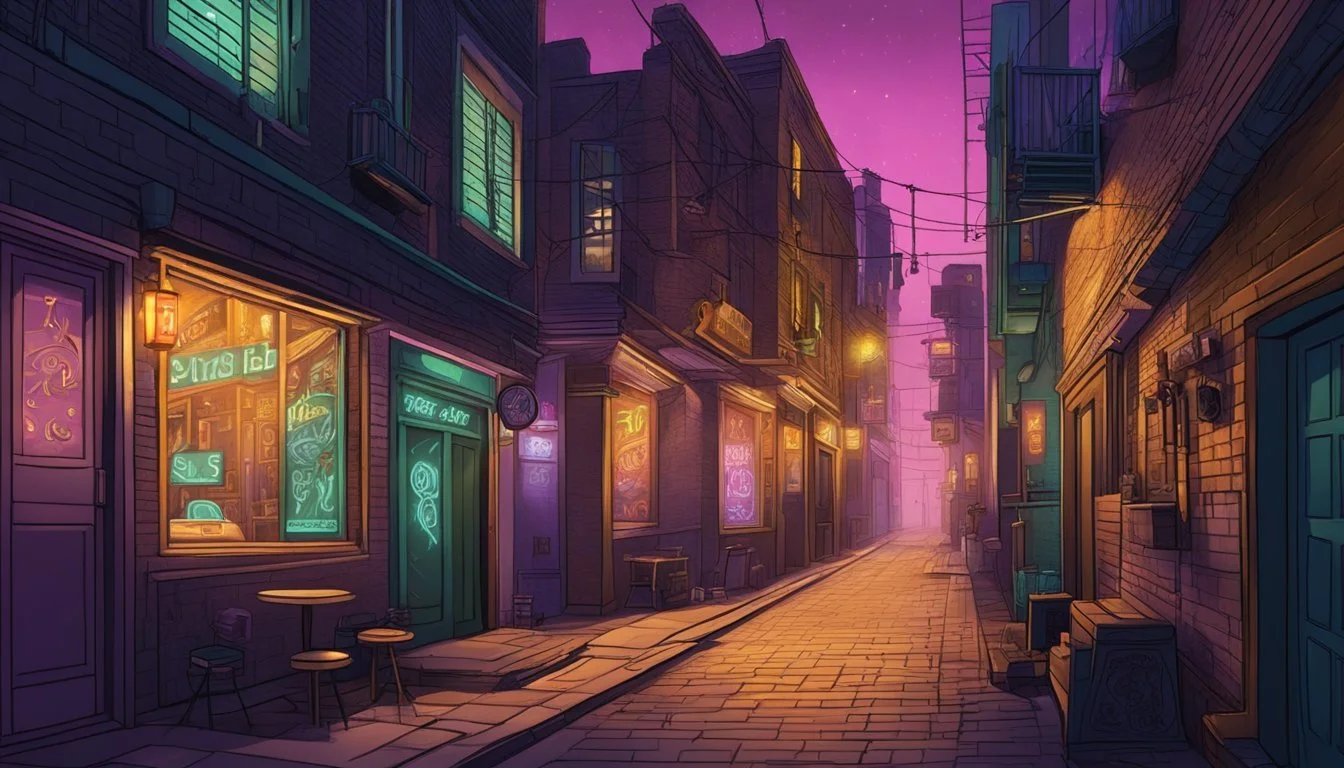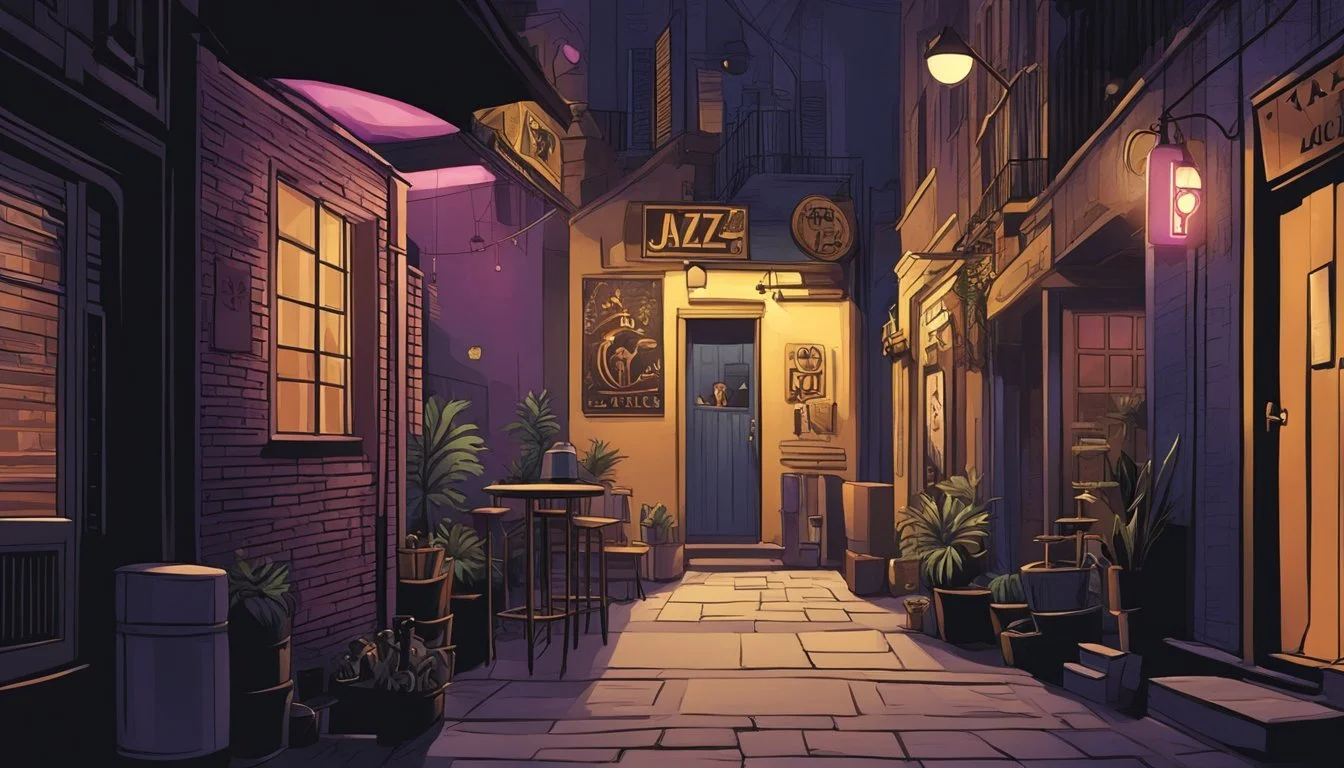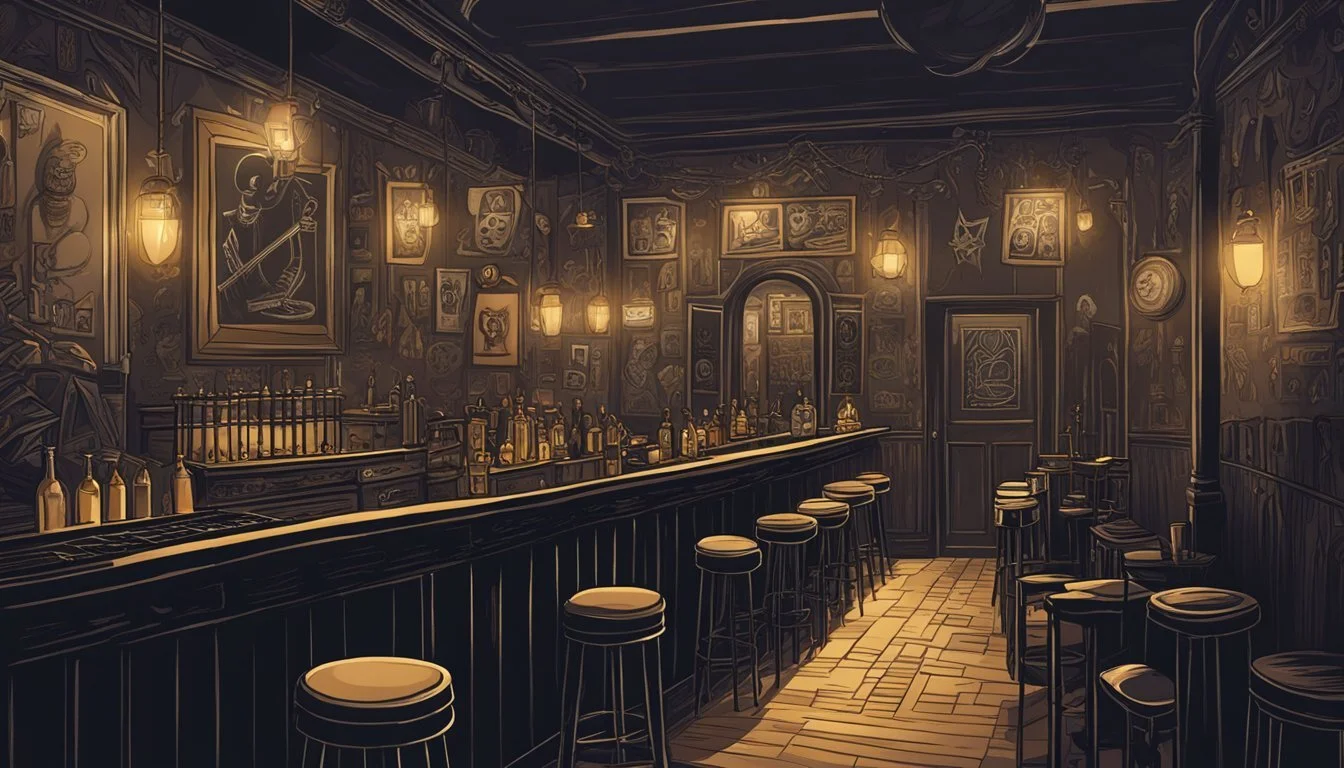Jazz, Voodoo, and Murder: The Eerie Legacy of Cedric Tresvant
New Orleans' Darkest Musical Mystery Unveiled
New Orleans has long been associated with jazz, voodoo, and mysterious crimes. The city's dark underbelly came to light once again with the emergence of Cedric Tresvant, a modern-day killer who drew chilling parallels to the infamous Axeman of New Orleans from the early 20th century.
Tresvant's reign of terror echoed the Jazz Age murders that had once gripped the city in fear. His brutal crimes and eerie connection to jazz music sent shockwaves through New Orleans, reviving memories of a past many thought long forgotten. The investigation into Tresvant's activities uncovered a twisted fascination with the city's musical heritage and occult practices.
The story of Cedric Tresvant serves as a grim reminder of New Orleans' complex history, where the lines between music, spirituality, and violence have often blurred. His case reignited interest in the unsolved Axeman murders and sparked debate about the lasting influence of the city's darker legends.
The Dawn of Jazz and Darkness in New Orleans
New Orleans birthed jazz amid a backdrop of crime and mysticism in the early 20th century. This unique cultural fusion set the stage for a period of musical innovation and unsettling violence.
New Orleans: Cradle of Jazz
Jazz emerged in New Orleans around 1895, blending African, European, and Caribbean influences. Congo Square played a crucial role, hosting drumming and Voodoo rituals that laid the foundation for this new musical form. Buddy Bolden, often credited as a pioneer, helped shape the improvisational style that became jazz's hallmark.
The city's diverse cultural tapestry contributed to jazz's development. French Quarter streets echoed with brass bands, while clubs and bars fostered musical experimentation. African American musicians like Jelly Roll Morton incorporated blues elements, creating a rich, soulful sound unique to New Orleans.
Timeline of Terror: May 1918 to October 1919
On May 23, 1918, Joseph and Catherine Maggio were brutally murdered in their Magnolia Street home, marking the start of the Axeman's reign of terror. This unsolved crime spree lasted until October 1919, targeting Italian grocers and their families.
The Axeman's attacks followed a chilling pattern:
Forced entry through a chiseled panel
Victims attacked with their own axe
No clear motive beyond violence
Fear gripped New Orleans as the killer evaded capture. In March 1919, a letter purportedly from the Axeman threatened more violence but promised to spare those playing jazz. This bizarre connection between murder and music added to the city's eerie atmosphere during jazz's formative years.
Cedric Tresvant: The Man Behind the Myth
Cedric Tresvant emerged as a chilling figure in New Orleans, blending the city's rich jazz culture with a series of brutal murders. His actions terrorized the community and left a lasting impact on the city's history.
Unveiling Cedric Tresvant
Cedric Tresvant was a New Orleans native born in the late 1980s. He grew up in a working-class family and showed an early aptitude for music. As a teenager, Tresvant became involved in the local jazz scene, playing trumpet at various clubs.
Despite his musical talents, Tresvant struggled with mental health issues. He was diagnosed with schizophrenia in his early twenties but often refused treatment. This led to erratic behavior and increasing isolation from friends and family.
In 2018, Tresvant committed his first murder. Over the next two years, he killed six people, all with an axe. His crimes bore a striking resemblance to the infamous New Orleans Axeman from the early 20th century.
Cedric Tresvant and the Jazz Connection
Tresvant's connection to jazz played a significant role in his crimes. He often targeted victims after performances at jazz clubs. In a twisted homage to the original Axeman, Tresvant would leave jazz records at crime scenes.
His musical background also influenced his modus operandi. Witnesses reported hearing jazz music playing from nearby apartments during some of the murders. This eerie soundtrack added to the terror gripping the city.
Tresvant's final victim was a well-known jazz pianist. This murder led to his capture when police found DNA evidence linking him to the crime scene. The jazz community was shocked to learn one of their own was responsible for the brutal killings.
True Crime and the Axeman Phenomenon
The Axeman of New Orleans terrorized the city from 1918 to 1919, committing brutal murders that shocked residents and captivated true crime enthusiasts. His reign of terror left a lasting impact on the city's history and culture.
Overview of the Axeman's Brutal Murders
The Axeman's attacks began in May 1918 with the murder of Joseph and Catherine Maggio. He used an axe to break into homes, often targeting Italian grocers. The killer struck at night, leaving victims with fatal head wounds.
Over the next year, the Axeman claimed more lives and injured others. His crimes sparked panic across New Orleans. In March 1919, he attacked the Cortimiglia family in Gretna, killing the husband and injuring the wife and child.
The Axeman taunted police and residents with a chilling letter published in newspapers. He promised to spare anyone playing jazz music on a specific night, linking his crimes to the city's musical culture.
Analysing the Axeman's Victims
The Axeman's victims were primarily Italian immigrants or those of Italian descent. Many operated small grocery stores attached to their homes. This pattern led to speculation about potential motives.
Victim Profile:
Mostly Italian Americans
Often grocery store owners
Attacked in their homes at night
The killer's method of entry involved chiseling door panels to unlock them. He used axes found at the crime scenes, leaving them behind after attacks. Some victims survived, providing limited descriptions of a dark-clothed, ax-wielding intruder.
Despite intense investigations, police never identified the Axeman. His true identity and motives remain a mystery, fueling continued interest in the case among true crime enthusiasts and historians.
Mystique of the Axeman
The Axeman of New Orleans haunted the city in 1918-1919, leaving a trail of gruesome murders and cryptic messages. His brazen communication with the public and chilling ultimatums fueled widespread fear and fascination.
Letters to the Times-Picayune
The Axeman's notoriety grew through his correspondence with the Times-Picayune newspaper. He sent multiple letters detailing his crimes and taunting law enforcement. These messages, printed for all to read, gave the killer a public platform and intensified the city's panic.
The letters described the murders in vivid detail, often including information only the killer would know. This authenticated the Axeman's claims and perplexed investigators.
His writing style was distinctive, mixing grandiose proclamations with threats and riddles. This further mystified the public and cemented the Axeman's reputation as an enigmatic figure.
The Chilling Message of March 19, 1919
On March 19, 1919, the Times-Picayune published the Axeman's most infamous letter. In it, he declared his intent to kill again but offered an unusual reprieve.
The letter stated: "I am very fond of jazz music, and I swear by all the devils in the nether regions that every person shall be spared in whose home a jazz band is in full swing at the time I have just mentioned."
This bizarre ultimatum sparked a citywide jazz party on the night of March 19. Homes and businesses blared music, hoping to ward off the killer.
The Axeman's jazz demand highlighted the cultural impact of his reign of terror. It intertwined New Orleans' vibrant music scene with the dark undercurrent of fear gripping the city.
Cultural Impact and Historical Legacy
Cedric Tresvant's eerie legacy left an indelible mark on New Orleans' cultural landscape. His story intertwined with the city's jazz scene and voodoo traditions, shaping perceptions for decades to come.
Jazz Age and Popular Culture
Tresvant's alleged crimes coincided with the height of the Jazz Age in New Orleans. His notoriety influenced local musicians, who incorporated dark themes into their compositions. Some jazz clubs capitalized on the macabre fascination, hosting "Tresvant Nights" featuring spooky tunes and occult-inspired decor.
The case inspired numerous books, films, and plays. Authors like William Faulkner and Tennessee Williams referenced Tresvant in their works, cementing his place in Southern Gothic literature.
Local tours began including stops at locations associated with Tresvant, blending jazz history with true crime intrigue.
Legacy of Fear and Fascination
Tresvant's legacy persisted long after his disappearance. His story became entwined with New Orleans folklore, often embellished with supernatural elements. Some claimed to see his ghost haunting the French Quarter.
The case influenced police procedures in New Orleans, leading to reforms in evidence handling and witness protection. It also sparked debates about the intersection of voodoo practices and criminal justice.
Hurricane Katrina in 2005 temporarily shifted focus away from historical mysteries. However, as the city rebuilt, interest in Tresvant's story resurged, symbolizing New Orleans' resilience and complex history.
Modern paranormal investigators frequently cite the Tresvant case in their research, keeping the mystery alive for new generations.
Investigating the Murders
The investigation into the Axeman murders focused on racial tensions and potential suspects. Authorities pursued several leads but struggled to identify the killer definitively.
Italian Immigrants and Racial Tensions
The Axeman's attacks primarily targeted Italian immigrants in New Orleans. This pattern led investigators to explore connections between the murders and anti-Italian sentiment. Many locals viewed Italian newcomers with suspicion, fueling speculation about possible motives.
Police questioned numerous Italian residents, creating fear within the community. Some theorized the killer might be seeking revenge against Italian grocers. Others believed the murders were part of a broader campaign of terror against immigrants.
The focus on Italian victims also sparked debates about racial profiling in the investigation. Critics argued that authorities unfairly targeted the Italian community while overlooking other potential leads.
Suspects and Theories: Joseph Momfre
Joseph Momfre emerged as a key suspect in the Axeman murders. Described as a dark-skinned man, Momfre fit some eyewitness descriptions of the killer. Police investigated his possible involvement in the 1918-1919 crime spree.
Theories about Momfre's connection to the murders varied:
Some believed he was the Axeman himself
Others thought he might be part of a larger criminal network
A few speculated he was falsely accused due to racial bias
Despite intense scrutiny, investigators never definitively linked Momfre to the killings. The lack of conclusive evidence left the case unsolved, adding to its mystique in New Orleans lore.
Jazz, Voodoo, and the Supernatural
New Orleans' unique blend of jazz, voodoo, and supernatural elements creates a mystical atmosphere that has captivated locals and visitors for generations. This fusion of music, spirituality, and the unexplained permeates the city's culture, particularly in historic neighborhoods like Tremé and Storyville.
Influence of Voodoo on New Orleans Culture
Voodoo practices have deeply influenced New Orleans' cultural landscape, intertwining with jazz music in unexpected ways. The rhythms of voodoo ceremonies often mirror the syncopated beats found in early jazz compositions. Many jazz musicians drew inspiration from voodoo rituals, incorporating their hypnotic rhythms into their performances.
In Tremé, the birthplace of jazz, voodoo altars could be found in the homes of some musicians. These spiritual spaces served as sources of inspiration and protection. Storyville, the former red-light district, became a melting pot where jazz and voodoo intersected, creating a unique cultural experience.
Supernatural Theories and Rumors
Supernatural rumors have long swirled around the jazz scene in New Orleans. Some believe that certain musicians made pacts with spirits to enhance their musical abilities. Tales of ghostly jazz performances in abandoned clubs persist to this day.
Italian grocers in the French Quarter often served as meeting places for musicians and voodoo practitioners. These shops became hotbeds of supernatural gossip and speculation. Some claim that specific jazz melodies could summon spirits or bring good fortune.
Haunted instruments, particularly those owned by famous jazz musicians, are said to play on their own at night. These eerie tales add to the mystique surrounding New Orleans' jazz legacy, blending the lines between music and the supernatural realm.
Examining the Societal Context
New Orleans in the 1920s was a melting pot of cultures, music, and social tensions. The city's unique blend of influences shaped its vibrant music scene and complex racial dynamics.
New Orleans' Music Scene and Social Dynamics
The Crescent City's music scene thrived in the early 20th century. Jazz emerged from the city's African American communities, particularly in neighborhoods like Tremé. Brass bands paraded through the streets, filling the air with lively tunes.
Storyville, the city's red-light district, played a crucial role in jazz's development until its closure in 1917. After that, musicians spread to other parts of the city, influencing the broader music scene.
The high mortality rate in New Orleans contributed to the prevalence of jazz funerals, blending somber mourning with celebratory music. This tradition reflected the city's unique approach to life and death.
The Creole Connection and Racial Undertones
Creole culture significantly influenced New Orleans' social fabric. Creoles of color, with mixed African, European, and sometimes Native American ancestry, occupied a unique social position.
Many early jazz musicians came from Creole backgrounds, bringing their musical traditions to the evolving genre. This connection added complexity to the racial dynamics of the music scene.
Racial tensions persisted despite the city's multicultural nature. Segregation laws affected where musicians could perform and who could attend shows. These restrictions shaped the development of jazz and its role in challenging social norms.
Conclusion: Reflecting on Cedric Tresvant's Eerie Legacy
Cedric Tresvant's legacy casts a long shadow over New Orleans' criminal history and modern true crime narratives. His brutal crimes and mysterious persona continue to captivate and unsettle audiences.
Debunking Myths and Acknowledging Facts
Cedric Tresvant's case is rife with misconceptions. Many falsely believe he was inspired by the original New Orleans Axeman, but evidence suggests his motives were unique.
Tresvant's use of an axe was coincidental, not a deliberate homage. His victims were chosen randomly, unlike the targeted attacks of his predecessor.
Some claim Tresvant had supernatural abilities linked to voodoo practices. These rumors are unfounded. His crimes were rooted in human malice, not mystical forces.
Forensic evidence played a crucial role in Tresvant's capture. DNA analysis and modern investigative techniques were key to solving the case.
Consequences on Modern True Crime Narratives
Tresvant's crimes have significantly impacted true crime media. Documentaries and podcasts often draw parallels between his case and historical killers.
This comparison has sparked debates about the ethics of sensationalizing real-life tragedies. Critics argue it glorifies violence, while supporters claim it raises awareness.
Tresvant's case has influenced how serial killers are portrayed in popular culture. It has highlighted the importance of accurate reporting and responsible storytelling.
The widespread coverage of Tresvant's crimes has also led to increased interest in New Orleans' criminal history. This has brought both positive and negative attention to the city.


